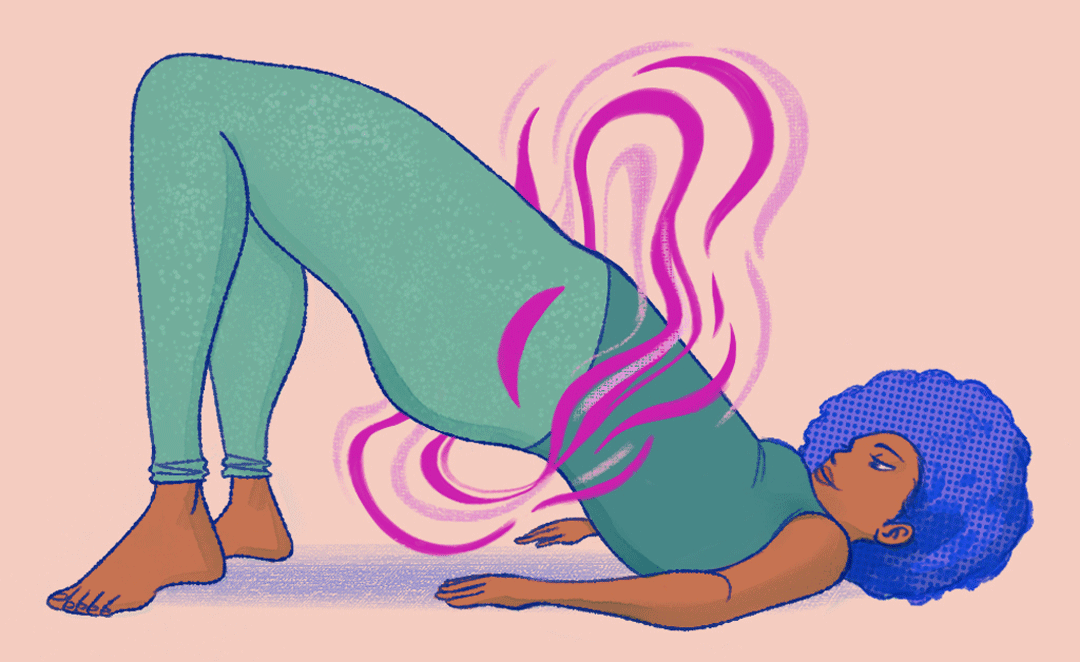
You & Your Pelvic Floor
Share
 You’ve likely never thought about your pelvic floor and how it relates to the rest of your body. It is just one of those things that you are vaguely aware of, but you aren’t sure what it does or if there’s anything you should be doing to keep it in good shape. You might not know that your pelvic floor is actually the base of several muscles known as your core.
You’ve likely never thought about your pelvic floor and how it relates to the rest of your body. It is just one of those things that you are vaguely aware of, but you aren’t sure what it does or if there’s anything you should be doing to keep it in good shape. You might not know that your pelvic floor is actually the base of several muscles known as your core.
Your core is made up of your pelvic floor, pubic bone, sacrum, multifidus, transversus abdominis, and diaphragm. These muscles work together by tightening and loosening to help with excretions. Keeping your pelvic floor strong is essential to your overall health and wellness, especially after pregnancy. The pelvic floor and the group of muscles connected to it protect your bladder, bowels, and uterus.
Your urethra, anus, and vagina are all connected to the pelvic floor. Essentially, this means that if your pelvic floor is weak, it can cause a whole host of issues for those organs. So to keep your pelvic floor in tip-top shape, what should you be aware of?
What Causes Pelvic Floor Issues?
Your pelvic floor is prone to weakening, tightening, or just being overtaxed. A weak pelvic floor can occur naturally or develop depending on your body’s individual circumstances. Some common things that affect your pelvic floor are:
- Pregnancy and childbirth
- Heavy lifting or working out
- Chronic coughing
- Problems with constipation
- Lack of activity
- Injury or age
These are all relatively common occurrences in everyday life, so it can be difficult to notice if your pelvic floor is weak, strained, or tight in the first place. The symptoms are easy to spot if you know what to look for, though they can be easily missed if you’ve become accustomed to them.
What Symptoms Come With Pelvic Floor Issues?
If you’re struggling with a lax or too tight pelvic floor, you may notice some issues downstairs that need to be addressed. Many older adults or people who have given birth may complain about problems using the bathroom, pain during sex, and other struggles related to pelvic floor weakness. Common symptoms include:
- Incontinence
- Painful urination or defecation
- Constipation
- Needing to strain while urinating or defecating
- Recurring pain in your lower back, pelvis, rectum, or genitalia
- Possible prolapse
If you’ve ever met someone who’s had a baby who shares that they no longer cough or sneeze without leaking a little bit of pee, they most likely have a weakened pelvic floor. This isn’t something that can’t be reversed, but it can be uncomfortable if you don’t know how to fix it. In severe cases, you may develop chronic bladder conditions or even prolapse, which is when the pelvic organs protrude. Prolapse may require the organs to be pushed back in or handled by a doctor to repair.
Thankfully, you can strengthen your pelvic floor to get it back in shape.
Strengthening Your Pelvic Floor
Just like any muscle, you can get your pelvic floor back in shape with some simple exercises. You may have heard of Kegels but wondered what exactly they are or what they do. Kegels are the purposeful contracting, holding, and releasing of the pelvic floor muscles. Doing this a few times a day can strengthen your pelvic floor in no time and is highly recommended for those suffering from bladder problems.
Squats can also help engage those pelvic muscles. Squats can be done with or without weight and help engage all of the muscles down below and keep your pelvis and thighs strong. These are easy to do from the comfort of your living room or at the gym and require little to no equipment.
If you really want to engage your core and help those muscles get strong again, you also want to try bridges. This is when you lie flat on your back, with your legs bent, and raise your pelvis off the floor. This exercise engages the core and helps those pelvic muscles, so they don’t feel sore or underused.
If you’re really struggling and even exercises don’t seem to be helping, you may want to talk to your doctor to see what their recommendations are for strengthening your pelvic floor. Your health is as important there as anywhere else.

